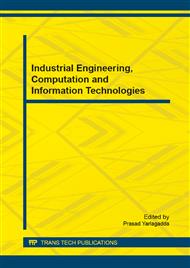p.1218
p.1223
p.1233
p.1237
p.1243
p.1249
p.1253
p.1257
p.1263
Design of Light Control Curtain System in Smart Home
Abstract:
To make a building structure beautiful and obtain a good daylighting, the windows become more and more big. It is inconvenience for the opening and closing of the bigger curtain. The frame structure of automatic control curtain is designed and manufactured, as well as DC motor drive, light detection, preventing over-wind, curtain position detection circuit. The corresponding control programs realize the automatic control function of curtain. Automatic curtain system contains three kinds of mode. Manual mode is the basic function of automatic curtain system. The wireless remote control function provides convenience for the user to control the opening and closing of curtain. Automatic light sensor model realizes the automatic control of curtain, according to the brightness of the light. The sensitivity of light sensor can be adjusted by artificial to make the customer satisfied. The open degree of curtain can be manual adjusted to meet the requirements of the various length of the curtain. The system is simple and practical. Its energy consumption and cost is low. As a part of the smart home, the system is suitable for opening and closing control of the curtains and provides the convenience for people's daily lives.
Info:
Periodical:
Pages:
1243-1246
Citation:
Online since:
December 2014
Authors:
Keywords:
Price:
Сopyright:
© 2015 Trans Tech Publications Ltd. All Rights Reserved
Share:
Citation:


